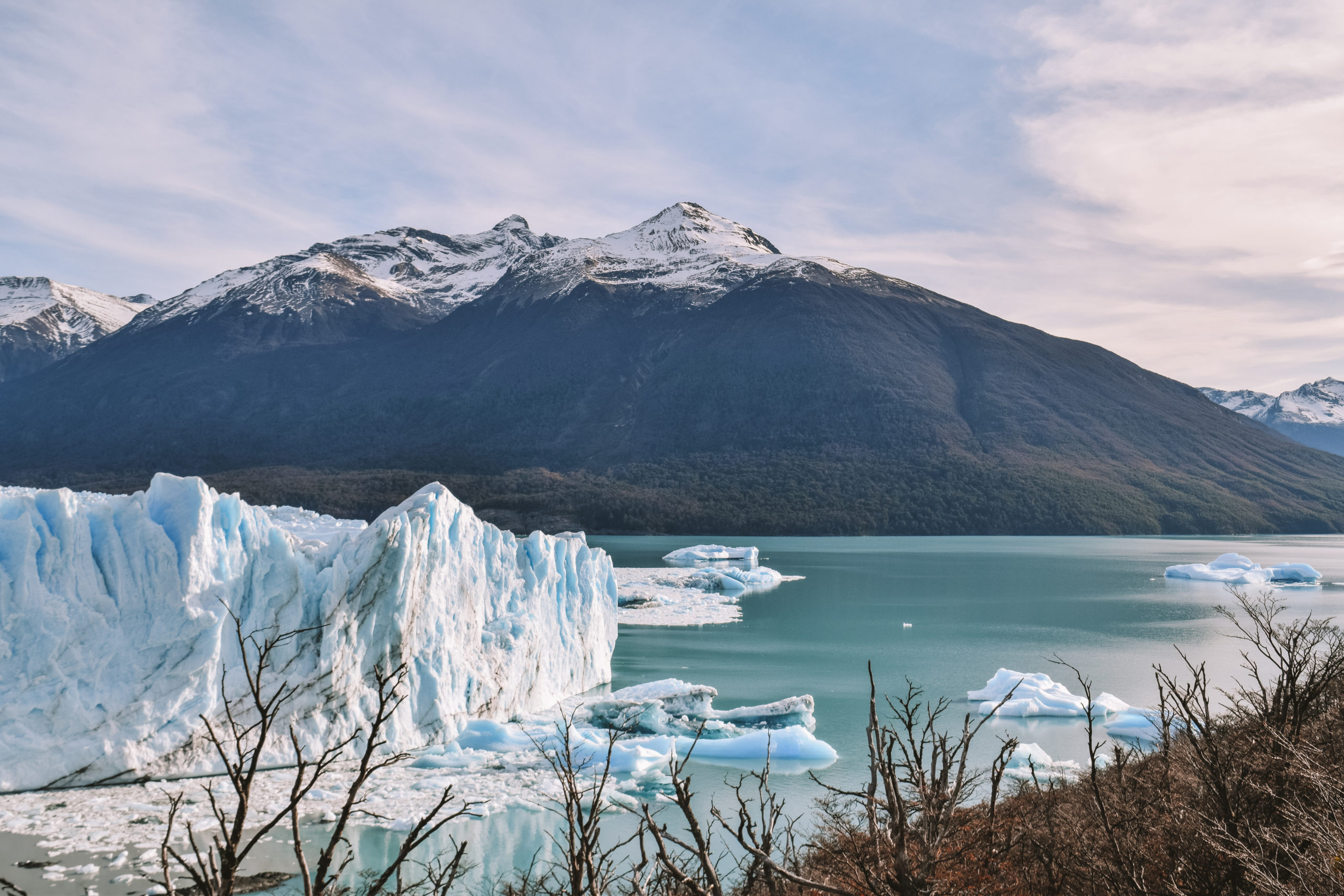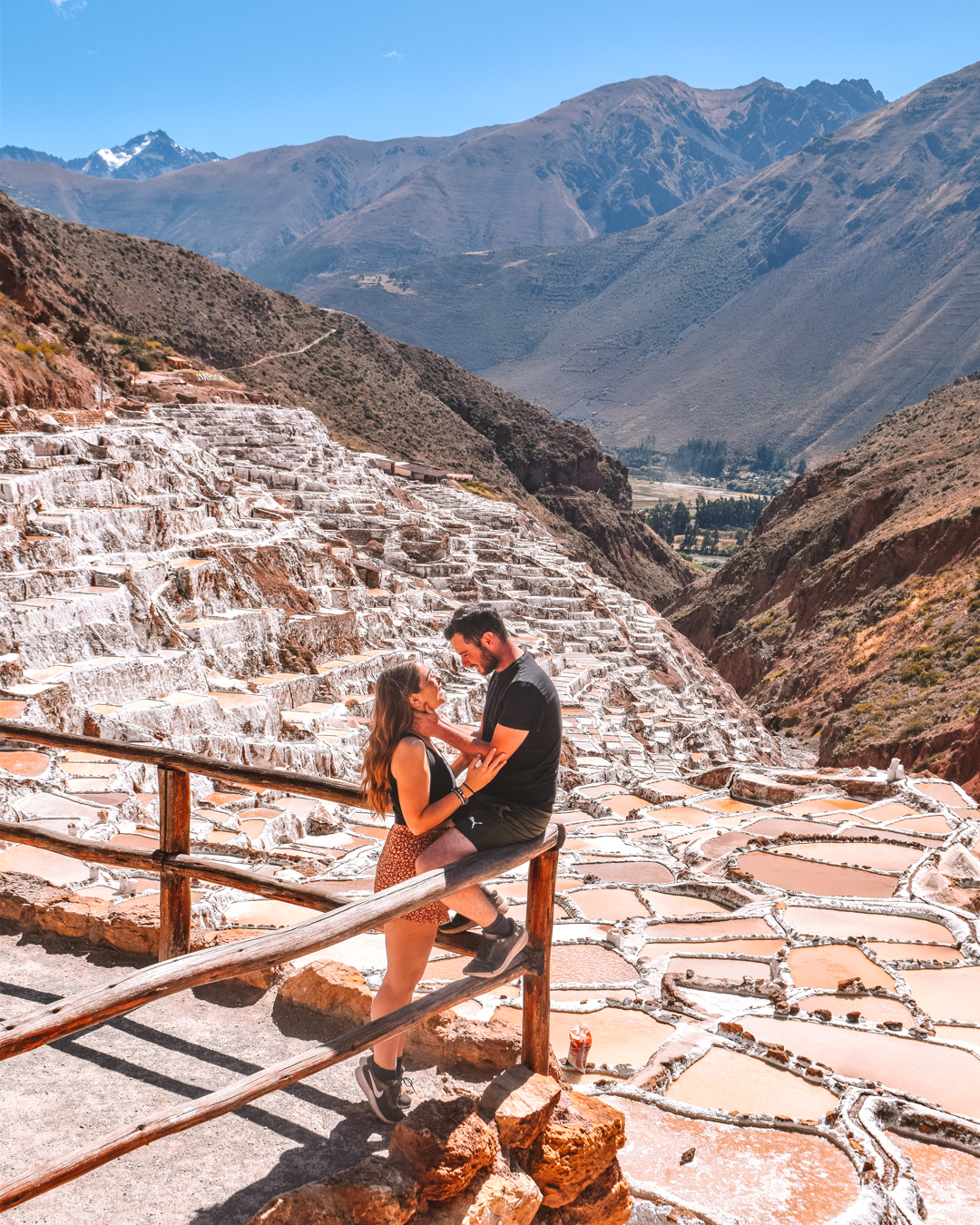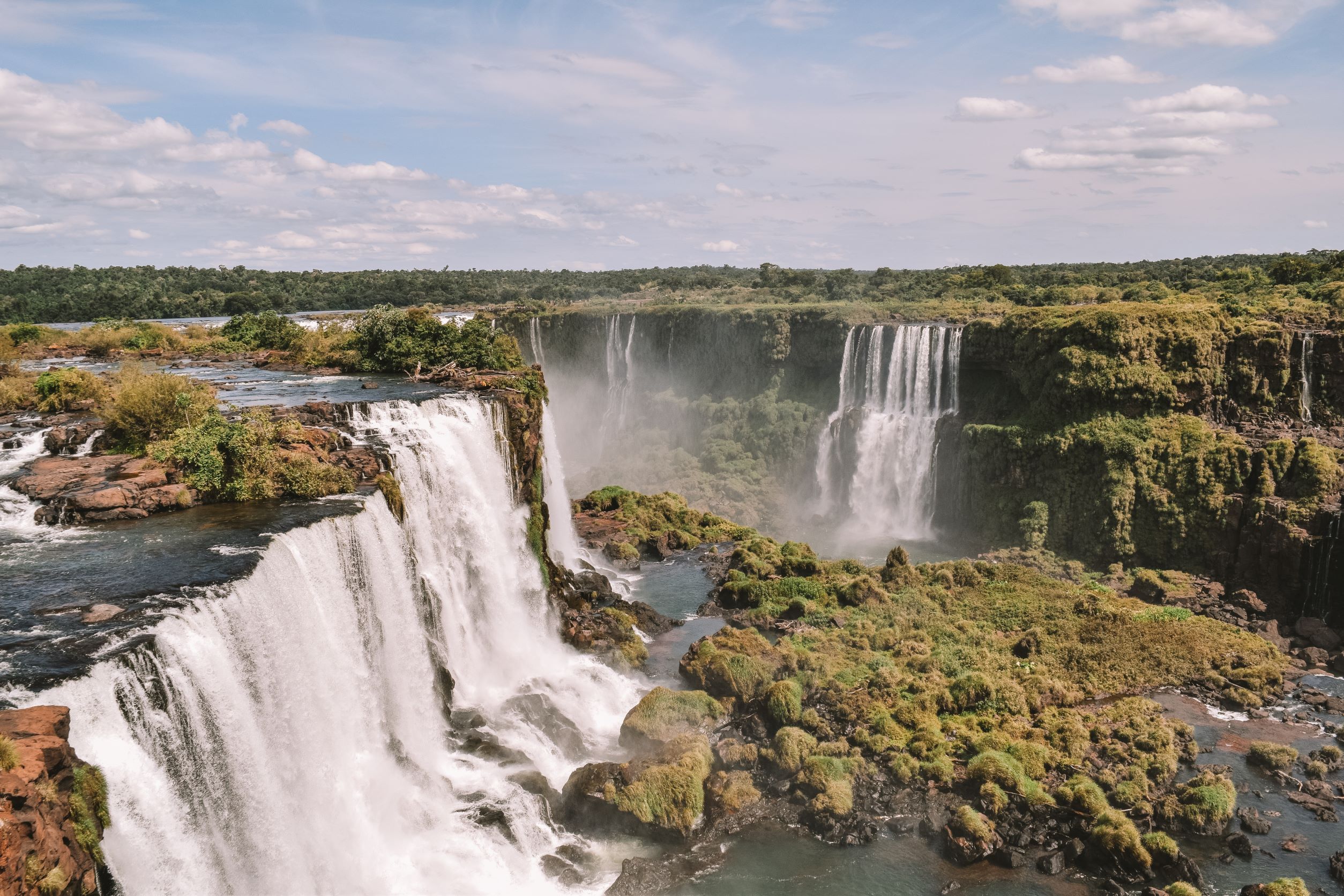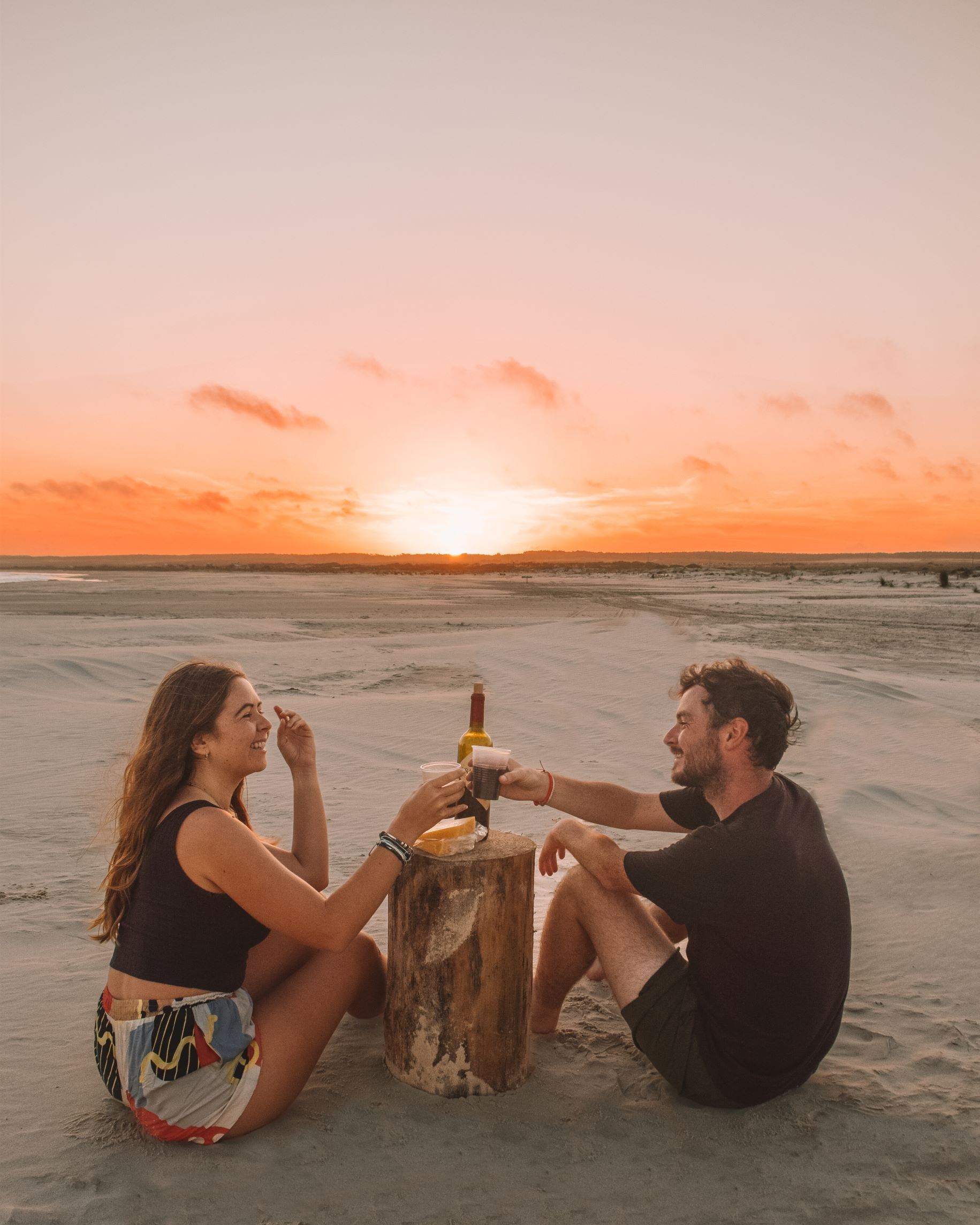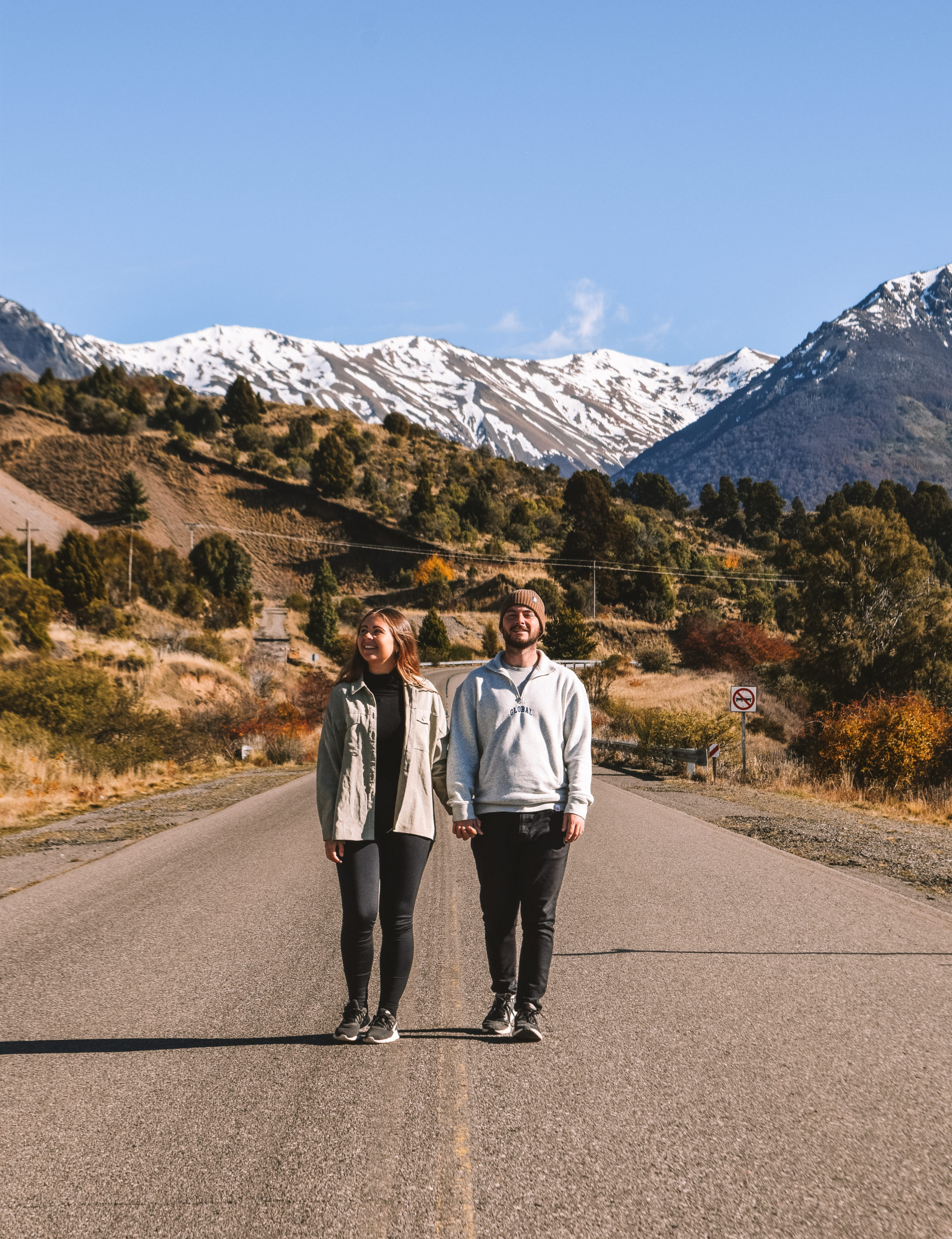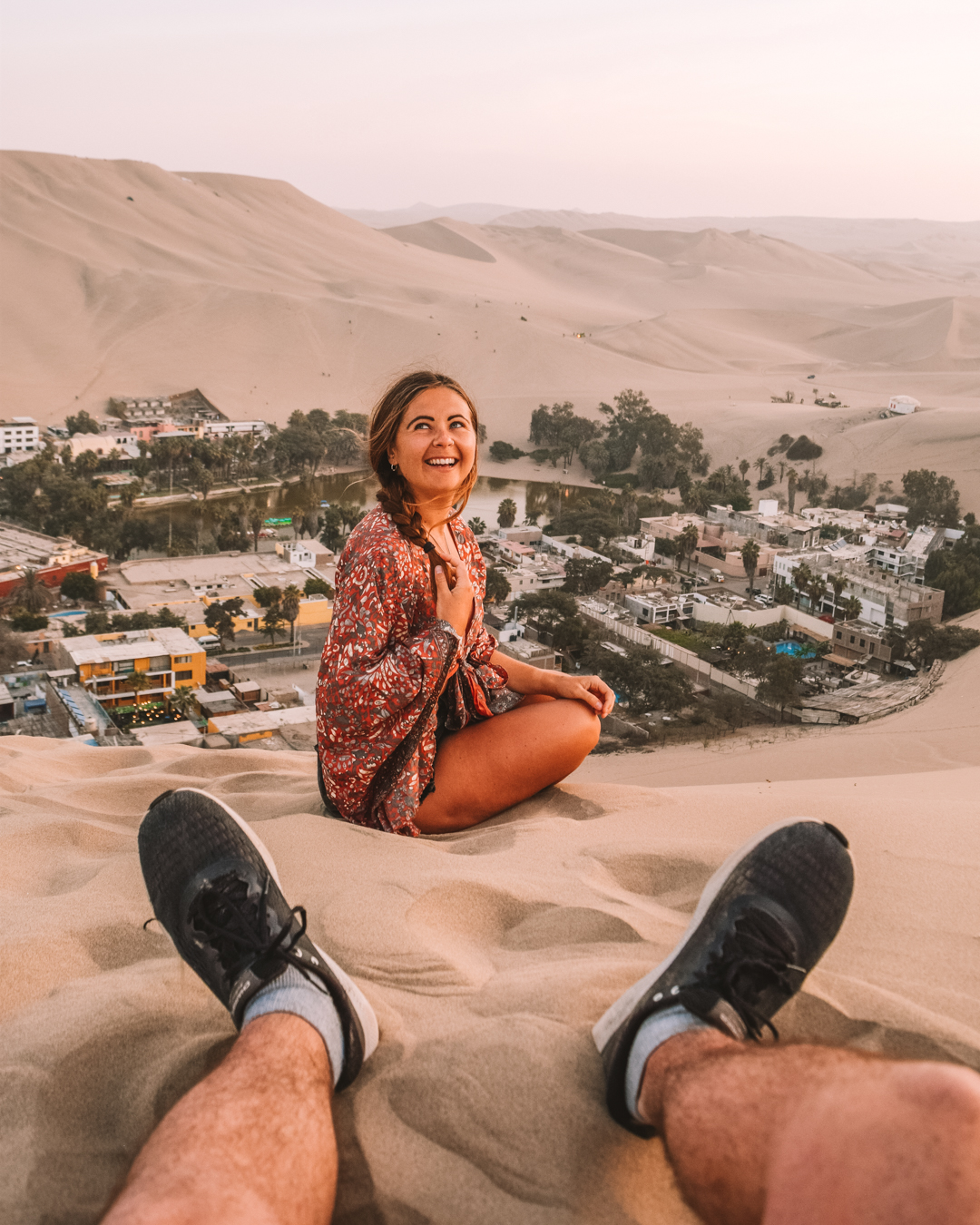The Ultimate Guide to Visiting Machu Picchu, Peru
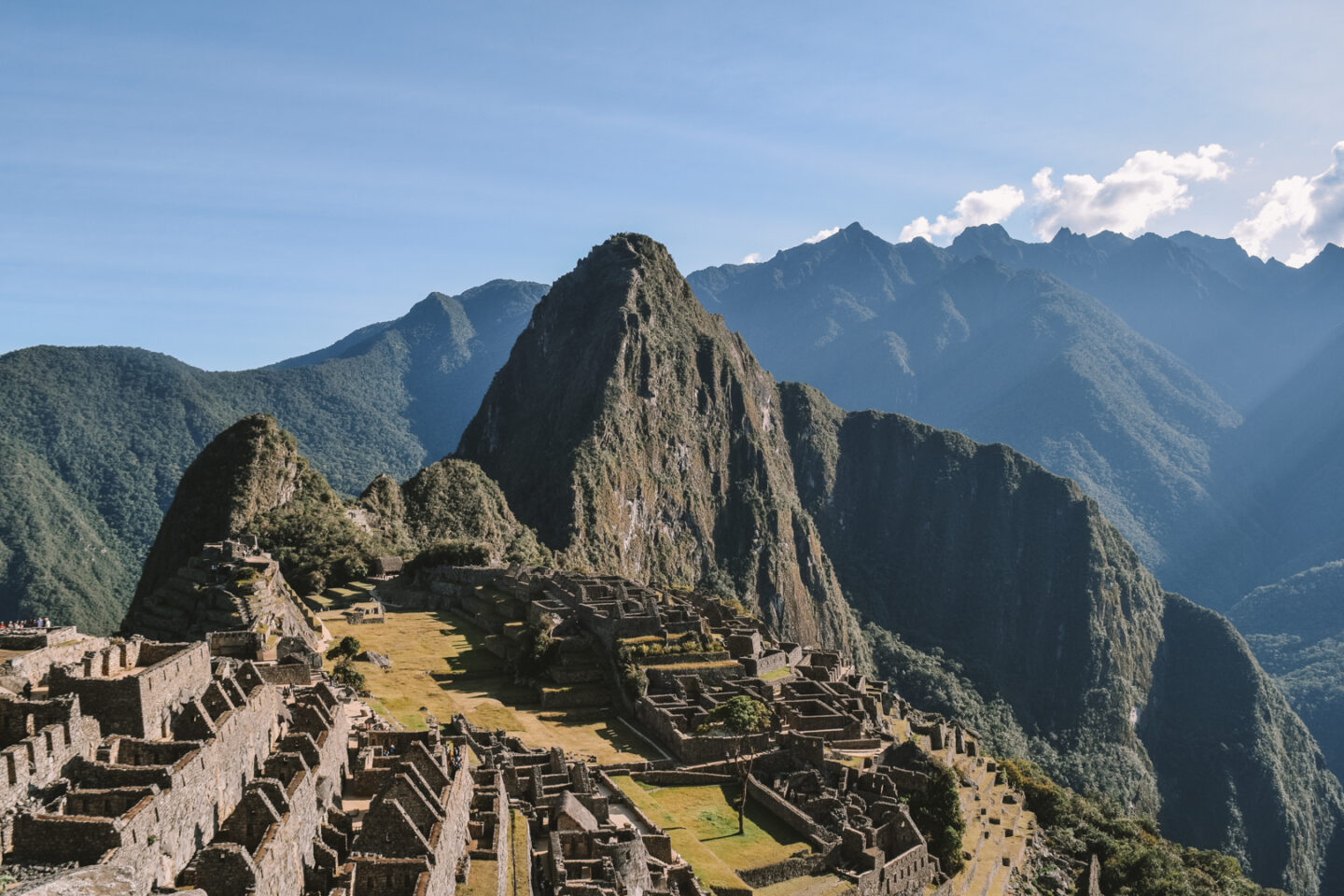
A trip to Peru isn’t complete without a visit to the incredible ancient site of Machu Picchu. As one of the 7 Wonders of the World, it really is a bucket list destination and should be on every traveller’s bucket list.
Machu Picchu in Peru is an ancient Incan city built in the 15th century on top of a beautiful mountain. The once-lost city was rediscovered in 1911 after being covered for centuries by the Andean forest. There are many different ways you can visit Machu Picchu, no matter if you visit via the world-famous Inca hike or the stunning train ride, it is set to become one of the highlights of your South America backpacking route.
Regularly mentioned in ‘most visited tourist attractions in the world’ articles, and with more than a million visitors a year, it was only a matter of time before stricter rules and regulations were brought in to preserve this New Wonder of the World for future generations to come to ensure that it stays in the same condition as it is in now for future generations.
The first set of new rules was implemented in 2019 (such as a four-hour time limit), however upon re-opening in 2021 after a break for Covid, much stricter rules have been brought, ones that you must know about before visiting Machu Picchu.
This includes reduced visitor numbers, a change in entry times and tickets, what routes you can take whilst inside, what you can bring inside and how to get a ticket to see the incredible sunrise.
If you are planning on visiting Machu Picchu in Peru then here’s everything that you’ll need to know including Machu Picchu tours and doing it alone.
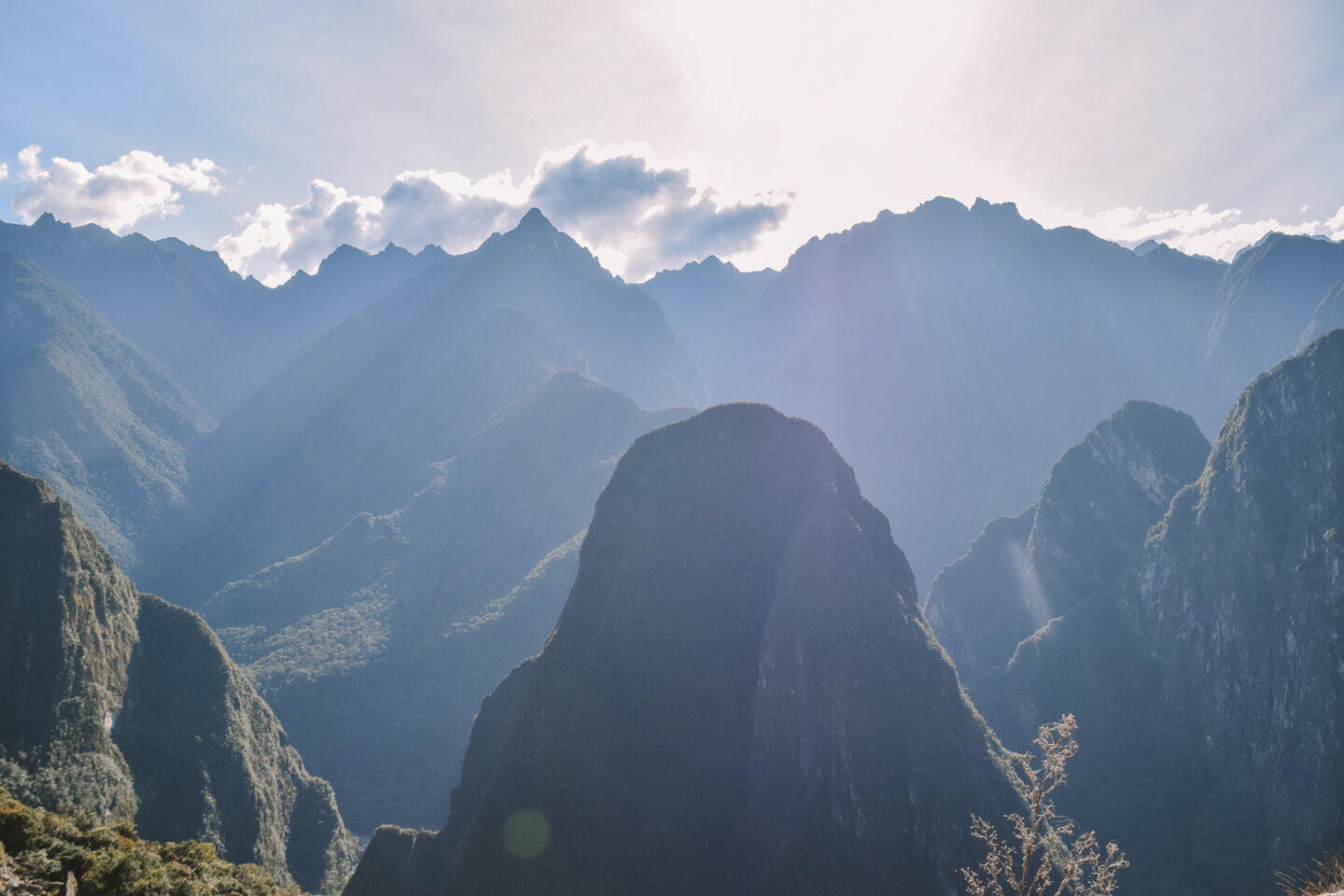
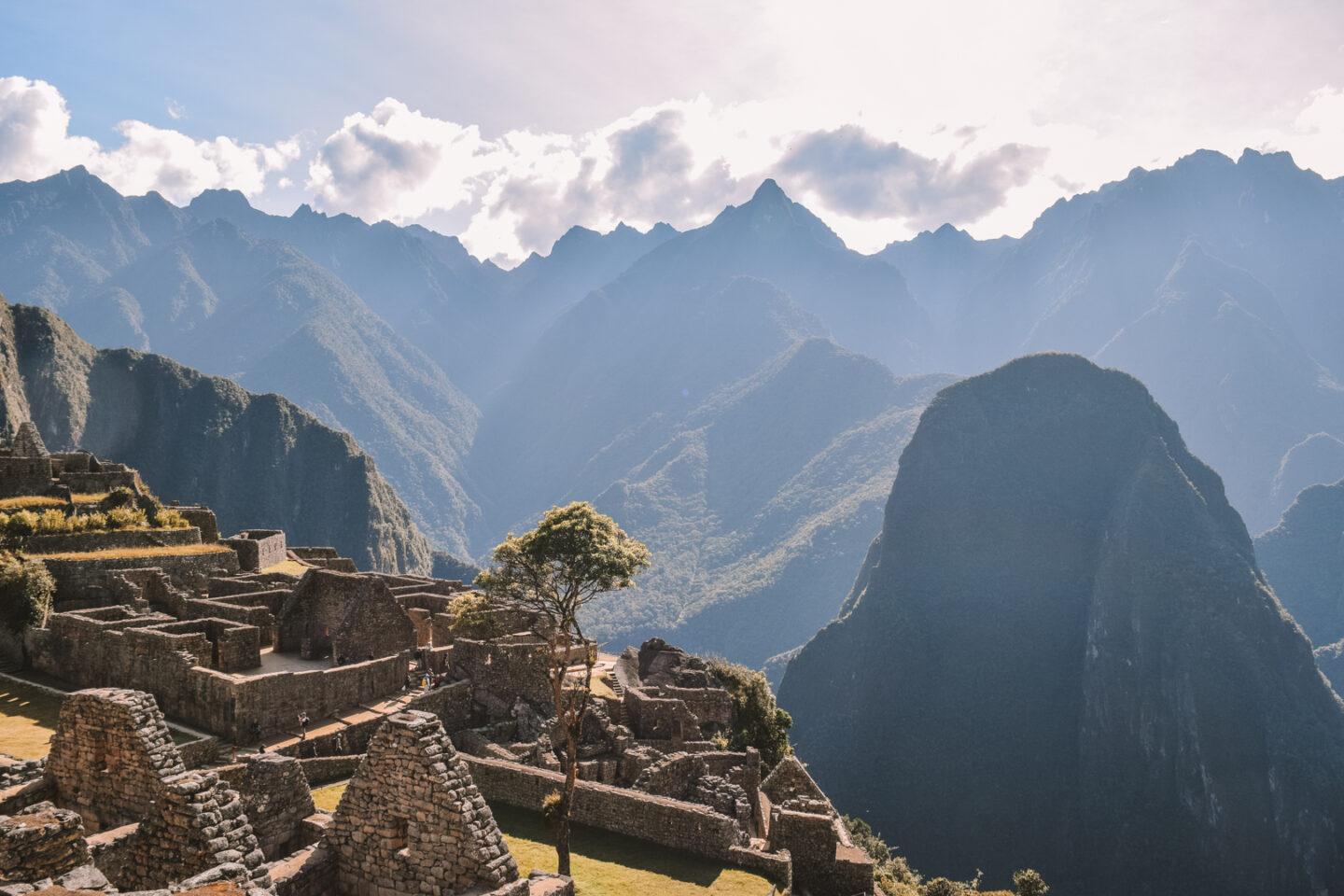
When is the best time to go to Machu Picchu?
Machu Picchu is open all year-round. And, whilst it is an incredible experience whenever you visit there are definitely better times of the year to visit Machu Picchu. October through April is the official rainy season, but you should be prepared for it to rain at any time. Peak season is July and August. If you choose to visit during these months you can expect beautiful weather and clear blue skies, however, you should also expect crowds.
We visited in July and can confirm that the sky was blue and the weather beautiful. Due to the cap on the number of visitors every day to Machu Picchu, we didn’t find it too busy. However, we can only imagine how incredible it would be during off-peak to have the place practically all to yourself.
Sundays are generally the busiest day of the week to visit – so try and avoid them if you can. This is because the people of Cusco can visit Machu Picchu on Sundays for free.
Do I need to acclimatise before visiting Machu Picchu?
If you are coming from Cusco and have already acclimatised in the ancient city then you shouldn’t feel any effects of altitude as Machu Picchu sits at a lower height of 7,972 feet (2,430 meters). If it is one of the first spots on your South America backpacking route then you will need to acclimatise before visiting.
However, if you are travelling from another spot that has a lower altitude or if you are planning on visiting Machu Picchu on your first day in the country then think again. Machu Picchu shouldn’t be your first stop during your South America trip. You may want to think of doing some other day trips from Cusco prior to visiting Machu Picchu to get acclimatised. You can see which other hikes and day trips we recommend here.
Machu Picchu Tickets
Visiting Machu Picchu is an incredibly popular site. With a staggering 6500 people entering the archaeological site every day so it’s no wonder you have to buy a ticket beforehand. To combat this and overcrowding, it is necessary to purchase a ticket in advance.
Machu Picchu Ticket Types
When it comes to purchasing a ticket, you have 4 options. We personally found it quite confusing trying to decide which type of ticket we needed to visit however, it turns out that we needed circuit 3 Machu Picchu Mountain + Ruins.
- Machu Picchu Ruins only
- Machu Picchu Mountain + Ruins
- Huchuy Picchu Mountain + Ruins
- Circuit 1 and 2 + Inca Bridge
You can buy your ticket here through their official site, via a tour company (more on that later) or in the city of Cusco or Aguas Calientes.
How much do tickets to Machu Picchu cost?
Machu Picchu Ruins – This is the most common ticket type and gives you access to the Machu Picchu ruins alone. The ticket to Machu Picchu costs 152.00 Peruvian soles (US 45.00/ £38) and 77.00 Peruvian soles (US 25.00/ £20) for students & children.
Machu Picchu Mountain + Machu Picchu Ruins – This ticket to Machu Picchu costs 200 Peruvian Soles (USD 53/ £44) for adults and 125.00 Peruvian soles (US 33.00/ £27) for students & children.
Huchuy Picchu Mountain + Ruins – The ticket to Machu Picchu costs 152.00 Peruvian soles (US 45.00/ £38) and 77.00 Peruvian soles (US 25.00/ £20) for students & children.
Circuit 1 and 2 + Inca Bridge – The ticket to Machu Picchu costs 152.00 Peruvian soles (US 45.00/ £38) and 77.00 Peruvian soles (US 25.00/ £20) for students & children.
You can buy your tickets for Machu Picchu online here.
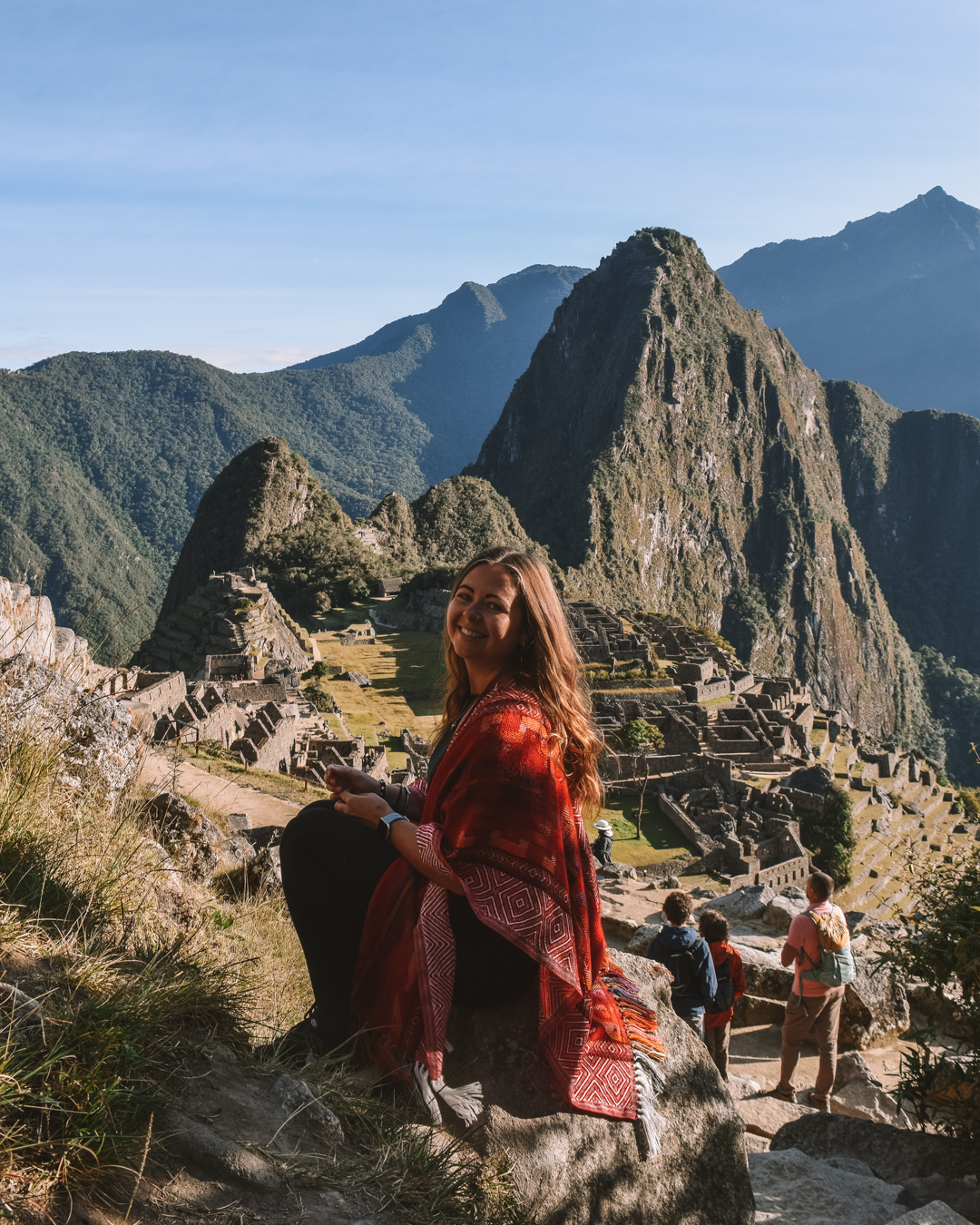
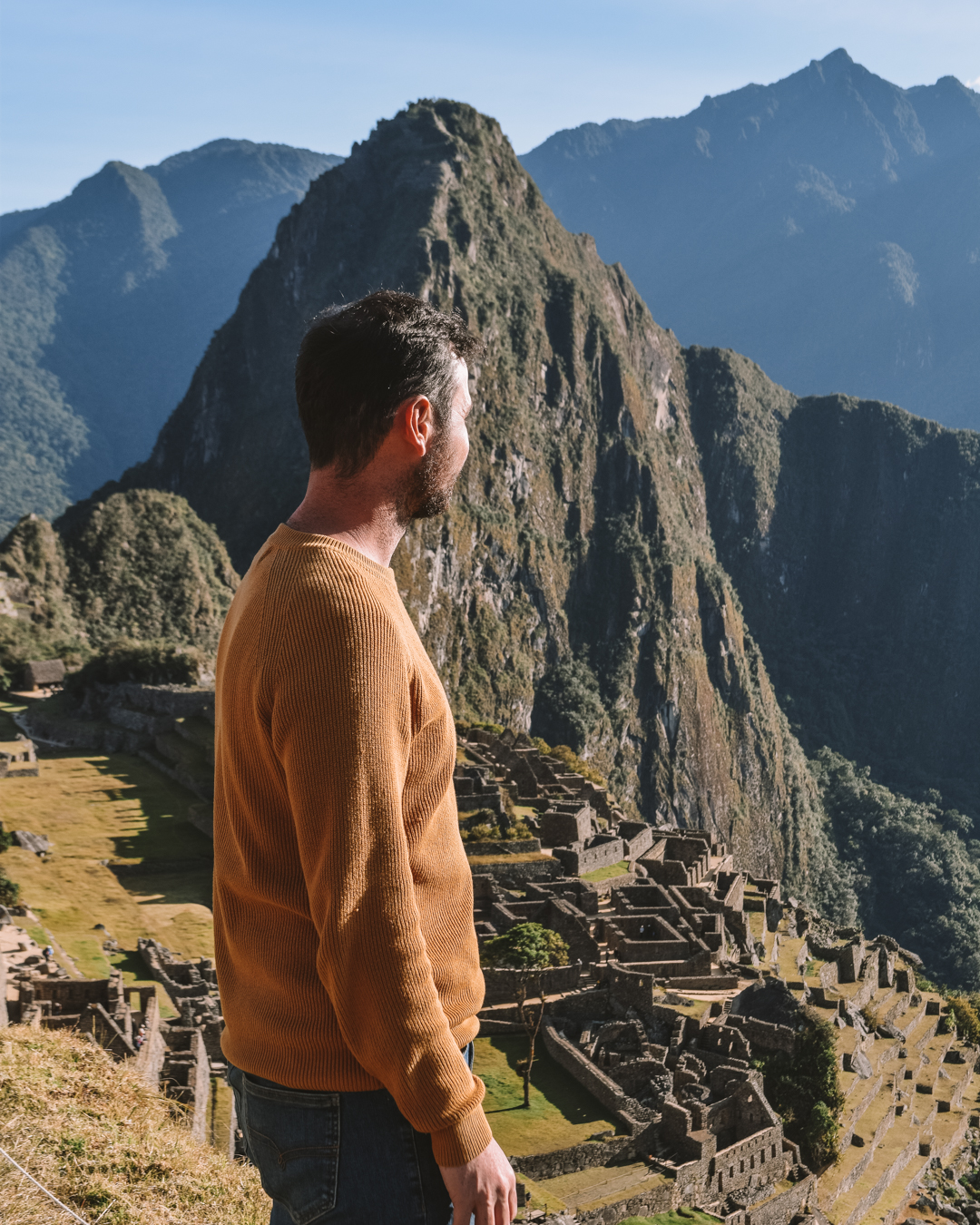
How to get to Machu Picchu: The hiking option
Hiking the Inca Trail
The most famous way of getting to Machu Picchu (and, before we visited; the only way we thought that you could get to Machu Picchu!). The Inca Trail is one of the most famous hikes in the world and certainly in South America. The hike itself brings you along ancient narrow paths deep into the Peruvian countryside and high into the Andean mountains. We haven’t done it but have heard that it is gorgeous; filled with ancient Incan ruins, a cloud forest, and majestic valley views each just a teaser of the incredible view that you will be met with at the end: the iconic Machu Picchu.
The hike is a 4-day, 3-night hike which isn’t for the unfit or faint-hearted and permits (which you have to get before undertaking the trail) are limited to 400 people per day.
The Inca Trail can cost anywhere between £550 per person to £1,500 and as you can imagine the experience can vary vastly between these options. The Inca Trail is an amazing way to experience Machu Picchu and the history that Peru has to offer.
The Salkantay Trek
A popular alternative to the Inca Trail, the 74-kilometre Salkantay Trek begins in Mollepata, a small town 100km from Cusco. Reaching a height of 4600m, this hike includes the crystal clear waters of Humantay glacier lake, along mountain passes and offers incredible views. Despite not doing this trek (or any of the hikes), we did visit Humantay Lake and can completely recommend it. We visited it as a day trip from Cusco.
The standard duration of this hike is 5 days but it can be stretched to 8 and include a more comprehensive route.
This trek ends in Aguas Calientes rather than Machu Picchu, making it a bit cheaper than the Inca Trail. But, also either adding on a small hike at the end or, the cost of the bus.
The Jungle Trek
One for those looking for a bit more adventure than just a multi-day hike. This 4-day, 3 nights Jungle Trek offers travellers the chance to head out river rafting, mountain biking, hiking in the jungle and even zip-line across the canopy.
Unlike most of the other multi-day hikes, accommodation throughout the trip is in hostels with the final night being spent in Aguas Calientes.
The Lares Trek
Considered to be more of a cultural experience than the other popular trails, the Lares Trek is a 4-day, 3-night route that begins in the town of Lares, 40 miles north of Cusco.
A little less demanding than the other options, as well as experiencing the beautiful backdrop of the Peruvian Andes, you will pass through small villages to see how the locals spend their days and learn a bit more about their culture.
How to get to Machu Picchu: the train options
The train to Machu Picchu is probably the most popular way of getting to the ancient site. You can opt to either get the train from Cusco or Ollantaytambo.

Prices vary depending upon which you pick, the time of year your travel (it’s more expensive during high season), and the time of train that you travel on – of which there are three:
Hiram Bingham – This is the most luxurious option out of the three and seeing as it costs around $500 USD per person you should hope so! It is worth noting that this ticket includes lots of goodies on board the train, your entrance to Machu Picchu and a guided tour but clearly, at this price point, is not going to be an option for the vast majority of travellers. You can book your tickets here.
The Hiram Bingham service runs every Tuesday, Wednesday, Thursday, Saturday & Sunday and stops at Poroy (Cusco) Station, Ollantaytambo Station, and Machu Picchu Station.
Vistadome – A slightly more budget-friendly option, this train offers incredible views from its glass ceiling as you travel to Machu Picchu. Your ticket includes some snacks onboard and light entertainment. You can book your tickets here.
This train service runs every day and stops at Ollantaytambo Station, Machu Picchu Pueblo Station, Poroy Station, San Pedro Station and Urubamba Station (not currently running).
Expedition – This is the cheapest option, but still a lovely experience – it is comparable to a first-class carriage in the UK and the train we got. There is no food or extras included in your ticket price, which can be as low as $50 USD in the off-peak season. The train does however, include a glass carriage where they stop and take each passenger through one, or two at a time so that you can get some photos and see the uninterrupted view. You can book your tickets here.
The train service runs every day and stops at Ollantaytambo Station, Machu Picchu Pueblo Station and Poroy Station.
How to reach Machu Picchu from Aguas Calientes
For those of you not completing the famous ancient Inca Trail – or visiting on a day trip from Cusco – to reach Machu Picchu you will have to travel through Aguas Calientes. The easiest way to get to this small town is by train from Cusco. It’s a scenic 3.5-hour trip each way along next to the Urubamba River in the Sacred Valley, with dramatic canyon walls on either side.
We absolutely loved Aguas Calientes and would recommend staying at least a night here. We could have actually happily stayed two nights if we had, had time. From this small tourist-centric town (also called Machu Picchu Pueblo), you have two ways to reach the entrance of Machu Picchu.
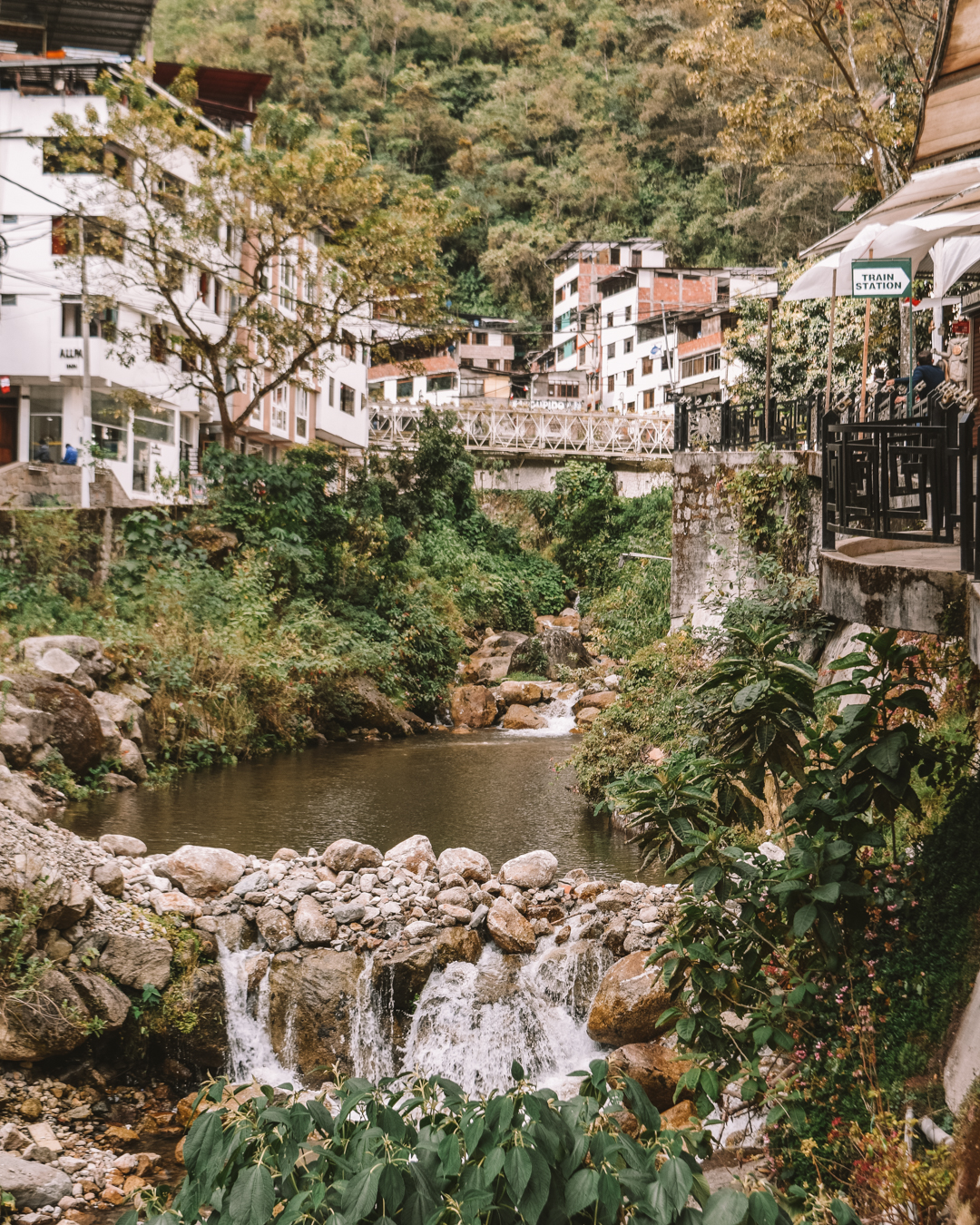

Take a bus to Machu Picchu
You can opt to take a bus from Aguas Calientes up to the entrance of the ruins. The bus to Machu Picchu costs $12 each way, it is eye-wateringly expensive compared to other bus journeys in Peru but, is worth it (in our opinion) to arrive at the ruins not completely soaked in sweat and shattered (you can also buy a return ticket for $24 per person). The bus tickets can be brought either in the town of Aguas Calientes or Machu Picchu the tickets cost the same in both spots.
The first departure is at 5.30 am, and the last is at 3 pm. There is no specific timetable per se, the buses just leave when they are full and another replaces its space.
The windy journey should take around 25 minutes, just ensure that you leave enough time to make it to the top for your entry slot.
You can find more information on the shuttle buses on the company’s website here.
Hike to Machu Picchu
Alternatively, If you don’t fancy paying for the shuttle bus or fancy the more scenic route then you can opt to hike from the town of Aguas Calientes up to Machu Picchu. The hike can take 90 minutes to two hours depending on your fitness level and is up A LOT of steep stairs.
The hike is probably one to avoid if you’ve arrived in the Sacred Valley without allowing yourself to acclimatise, but otherwise, it’s a great way to feel like you’ve ‘earnt’ the view of Machu Picchu.
To find the start of the trail, follow the route of the Machu Picchu shuttle buses until the road takes a sharp left turn over the river and you pass a small bridge (this part should take no longer than 30 minutes).
Immediately after the bridge, take a right turn down a small lane and keep going until you reach the clearly sign-posted trailhead. From here it is around another 60 minutes of walking uphill and up those stairs that we’ve mentioned to the entrance of Machu Picchu.
Top Tip – If you opt for one of the above options instead of opting for a Machu Picchu tour then make sure that you also plan to visit Sun Gate. You can’t usually do this if you are on a tour as you are bound to their timings. However, If you enter of your own accord then it is well worth the early start to get there at 6.00 am to see the sun rising behind Machu Picchu.
Machu Picchu tours – the option we went for
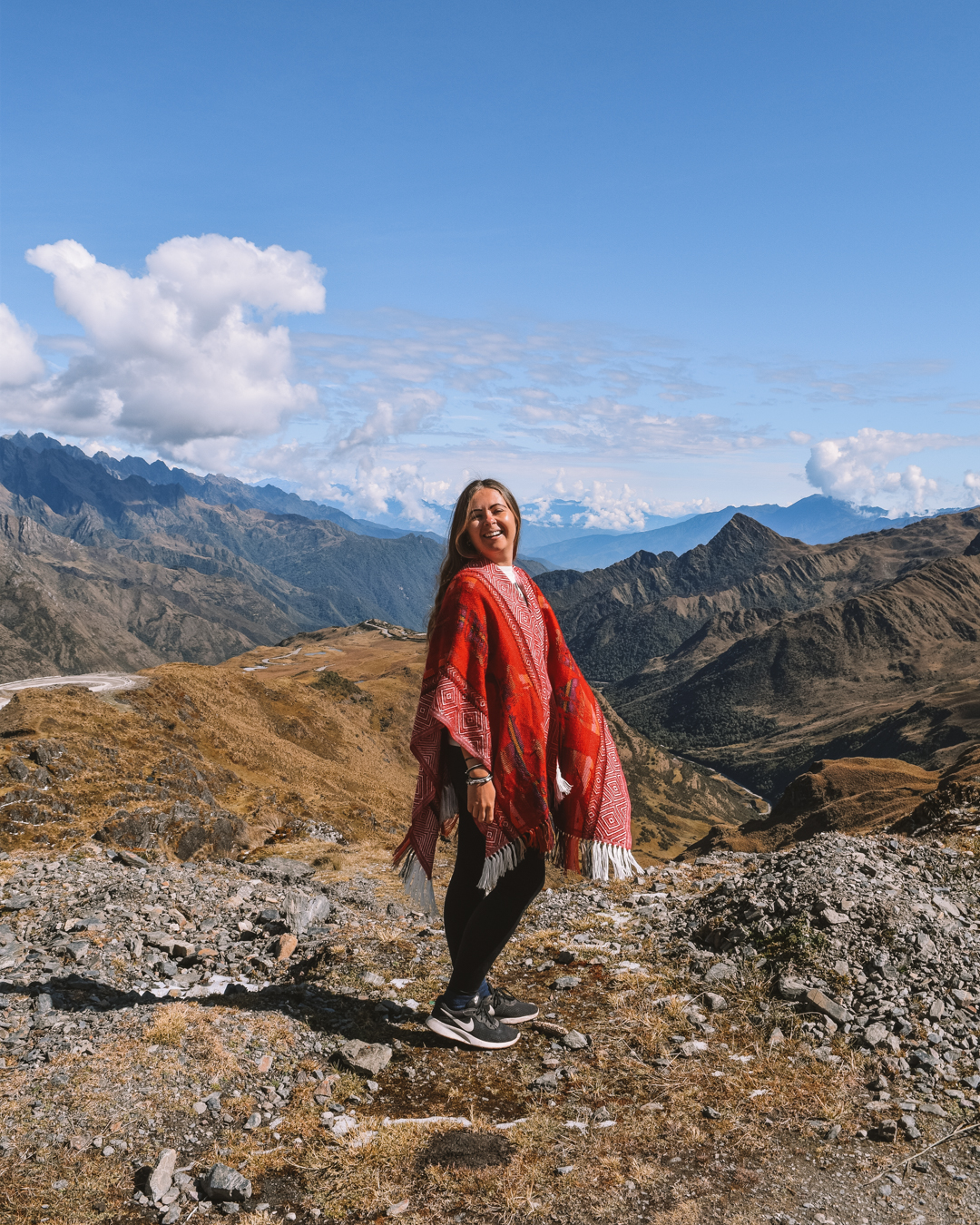
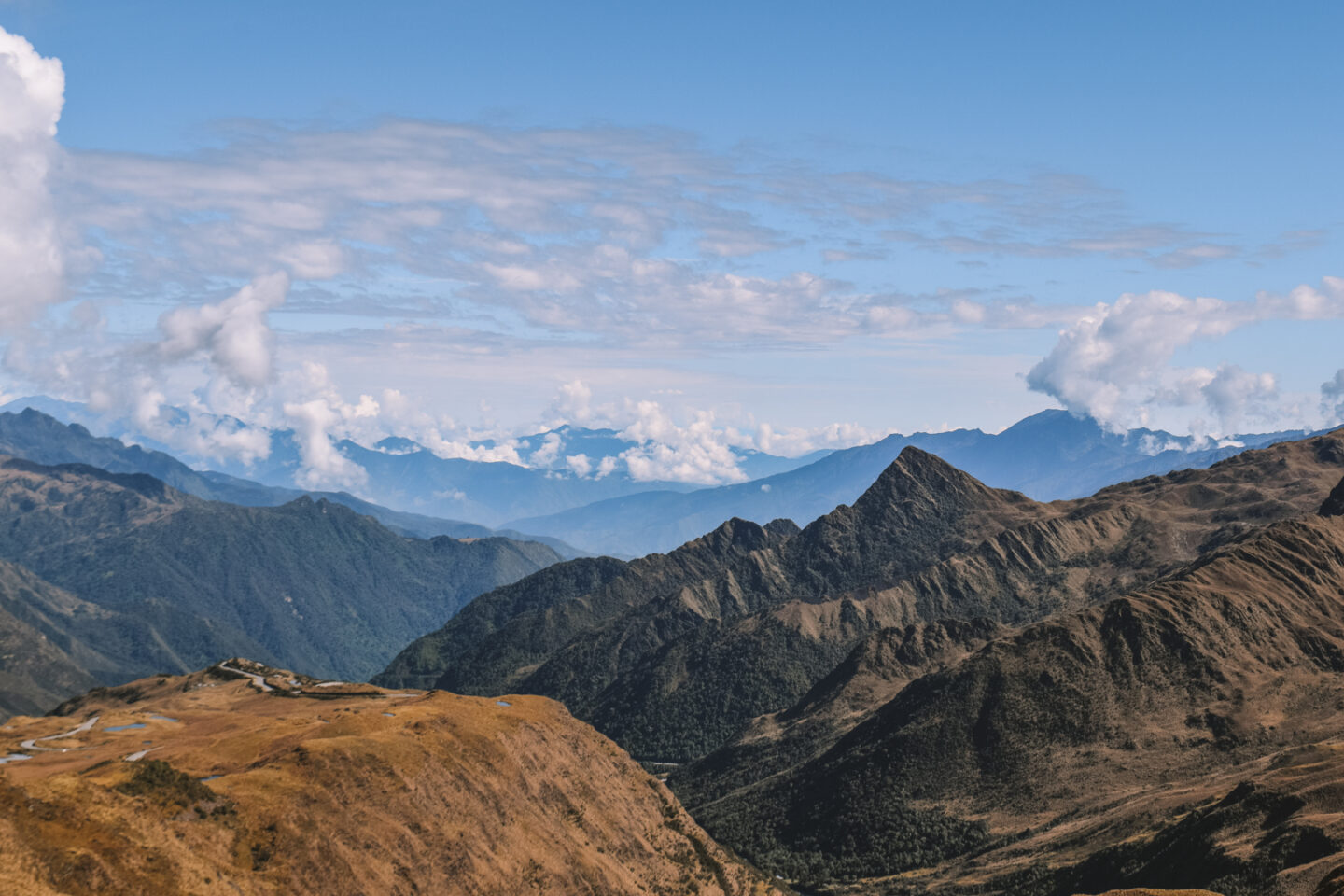
The most convenient and one of the most popular ways of visiting Machu Picchu is to go on a Machu Picchu tour. Whether you have booked yourself a day tour from Cusco, a 3 or 6-day hike or an overnight tour from Cusco (the option that we went for) you will be pleased to know that all tours include your ticket to Machu Picchu – this was really beneficial for us as we (stupidly) left the booking of Machu Picchu to the last minute and all of the tickets were sold out! Panic set in.
Thankfully there were some tickets left for Machu Picchu by Car (2 days) with Denomades. This was by far the best budget Machu Picchu tour coming in at just 132 USD (currently on sale at 99 USD/ £82)
The Machu Picchu tour includes:
Round trip shared transportation between Cusco and Hidroeléctrica.
Drop off in downtown Cusco on the way back
Meals:
Lunch on day 1 & Dinner on day 1
Accommodation:
Night in Aguas Calientes in a private room
Entrance ticket to Machu Picchu (archaeological site)
Guided tour of the Machu Picchu archaeological site
Bilingual guide (Spanish and English, only in the citadel)
The tour is a little confusing, to begin with, and is more self-guided than anything. After a very windy journey from Cusco, you are dropped off in what seems like the middle of nowhere where you enjoy a buffet lunch and then you hike, without a guide to Aguas Calientes. The ‘tour’ at this point felt very unorganised it was essentially a bus and then a self-guided walk. The walk is around 3/ 4 hours long and fairly flat, it’s a pretty walk along the train tracks and even includes a few ice cream shop stops.
Once we reached Aguas Calientes we weren’t sure where to go. Head to the square, which is about a 5-minute walk from the point in the town where you will first get it. Here there is then your tour leader who will be shouting your name (along with a lot of other tour leaders shouting for their tours). You will then be shown your accommodation. Our room was nice with an en-suite and TV overlooking the town, again the whole experience was just a bit unorganised and involved a lot of waiting around trying to find out which members were in which hotel.
We then headed into the town and enjoyed a glass of wine at a local restaurant overlooking the square before meeting back up with the group for dinner.
The following day involved another early start and our trip to Machu Picchu.
We actually opted to book the train back to Cusco as it had been an extremely busy week full of tours and early starts and we decided we would prefer to pay a bit extra money than arrive back into Cusco late. If you are, however, short on budget but not on time then this really is an amazing budget-friendly Machu Picchu tour.
When it comes to Machu Picchu tours, there are of course heaps of other options. Including full one-day tours from Cusco, longer tours and ones that include the train instead of a bus.
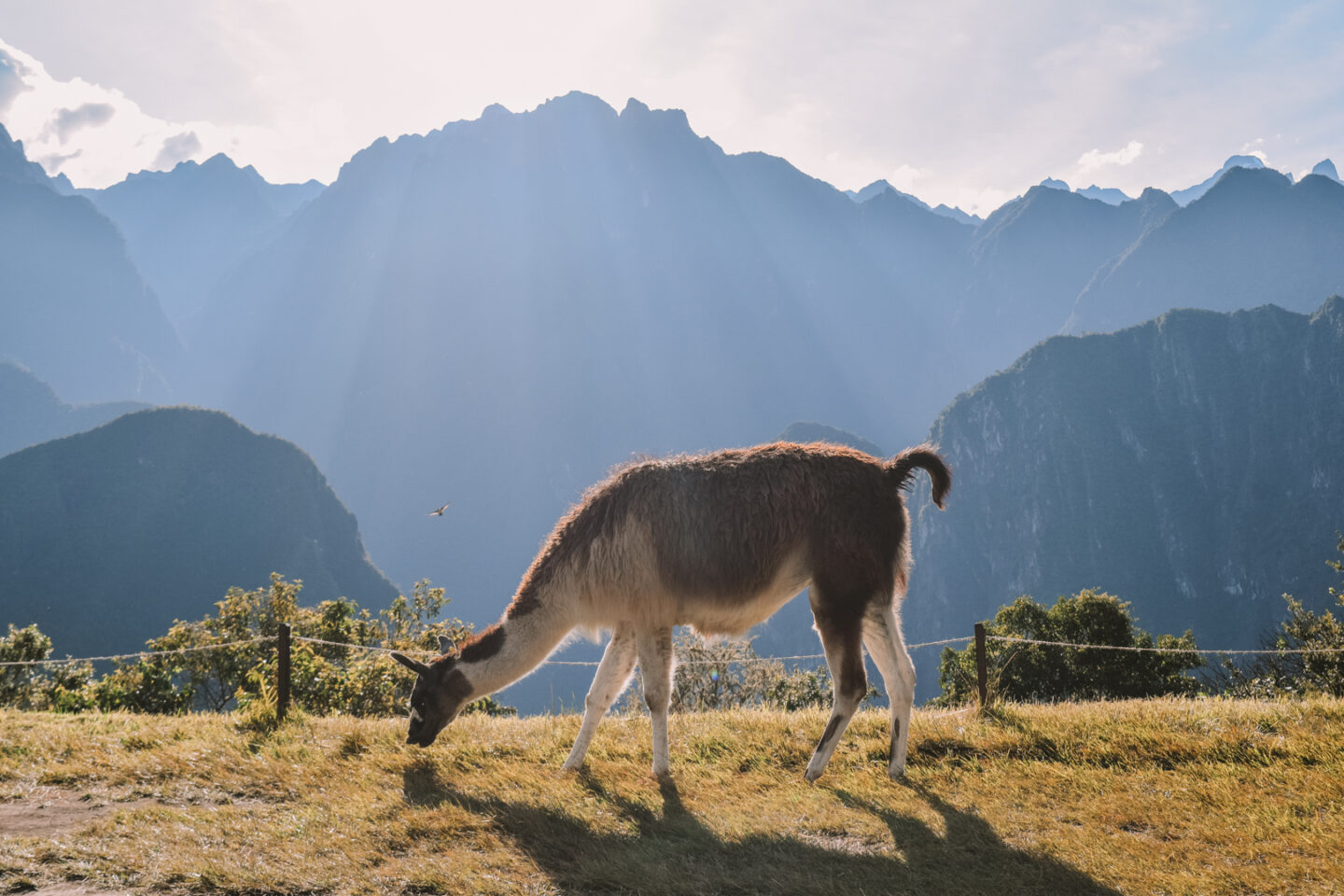
Things to remember when visiting Machu Picchu
- Tripods or drones aren’t aloud
- It is mandatory (it was when we visited in 2022 anyway) to have a guide
- Use the bathroom before entering (there isn’t any – obviously, in the ancient site)
- Book your tickets early enough to ensure you can visit on the dates that you want
- You need to bring your passport with you for ID- you can also get this stamped at Machu Picchu if you like
- There is a fixed route around Machu Picchu, meaning you can’t go back on yourself
- You can’t take jumping or lifting photos due to a previous injury at the sight (our guide helped us get one safely)
With all of this in mind, visiting Machu Picchu is an absolutely incredible experience and one that should be on every South America backpacking route. It truly is breathtaking. So, go and have the time of your life and make tons of epic memories.
